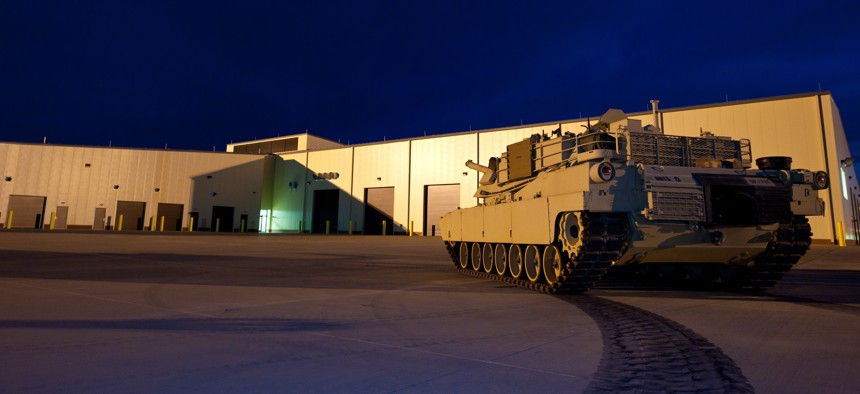
John Helms/U.S. Army Corps of Engineers
Chasing the Elusive BRAC, Pentagon Says Readiness Is at Stake
Defense officials are changing their pitch for base closures. Will Congress listen this time?
After five years of asking Congress to authorize another round of base realignment and closures to no avail, the Pentagon is switching up its appeal, saying BRAC wouldn’t just save money, but would also support national security priorities and improve readiness.
As the new administration settles in, the Defense Department is amid major self-assessments, from the highest level — an update to the National Defense Strategy — to issue-specific ones such as a new Ballistic Missile Defense Review. It just makes sense to better align the department’s infrastructure with those updated strategies, says Lucian Niemeyer, the new assistant defense secretary for energy, installations, and environment.
“Looking at a whole new realm and era of new technologies, new methods of warfare, emerging capabilities, and fifth generation weapons systems [we need] an updated basing strategy to meet an emerging and new national defense strategy,” Niemeyer said Tuesday. “That is the sole and primary reason … to look at our basing: to make prudent decisions on where to station forces, in order to optimize their effectiveness.”
Since the Pentagon started asking for a new BRAC five years ago, it has been emphasizing the budgetary benefits of closing unneeded facilities. Just listen to then-Secretary Ash Carter on BRAC in a budget hearing last year: “We need to stop spending so much money to hold onto bases we don’t need… By [2019], it will have been 14 years since DOD was allowed to right-size its domestic infrastructure, which any business leader or citizen would think is ridiculous — and they’d be right.”
But that’s not the main factor the Pentagon is stressing anymore. Niemeyer says that at its core, BRAC is a matter of improving readiness.
“It’s really difficult to have to send our military forces somewhere else in the United States to train when they’re already deployed for one year out of every two or three years,” he said. “We need to look at how do we ultimately station those forces at locations that they can be more effective, more efficient, and do a wider array of full-spectrum training, close to where they actually live and where their families are.”
Niemeyer has been on the job for less than a month, but jumped into the BRAC discussion in a panel at the Heritage Foundation the same day Congress returned from August recess. The timing is opportune: the Senate is likely to consider the 2018 defense authorization bill next week, possibly including an amendment floated by Sens. John McCain and Jack Reed that would authorize a BRAC round.
That sponsorship, from the chairman and ranking member of the Senate Armed Services Committee, respectively, could be a “key element” to making the first BRAC in over a decade happen, said Andrew Hunter, a senior fellow at the Center for Strategic and International Studies.
“There has to be a champion who is taking this on and pushing it forward — and it has to be somebody who chairs one of the two armed services committees,” said Hunter, who is also a former congressional staffer.
Fraught and politically difficult from the moment it was introduced in the late 1980s, the BRAC process ground to a halt after its fifth round in 2005. Concerns about upfront costs, economic harm to to local communities, political meddling, and jettisoning a property the military might someday need have meant the Pentagon’s recent requests have gone unanswered.
